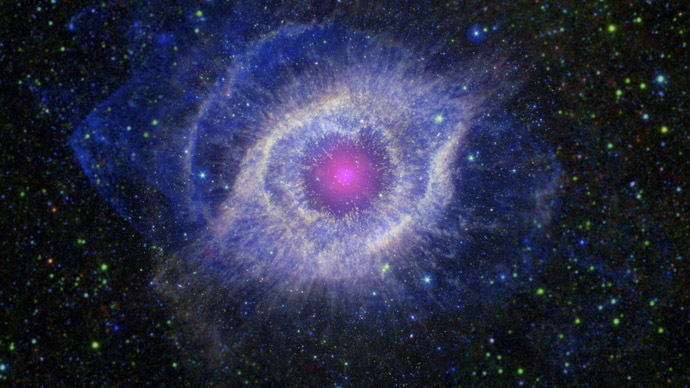‘Cosmic barbeque’: Dying stars could give birth to DNA, study claims

American scientists have discovered that cosmic hotspots near dying stars are prime locations for forming molecular precursors to DNA. They claim life originated not just in space but also near the incredibly hot dying stars.
In the process of the research, carried out by the US Department of Energy's Lawrence Berkeley National Laboratory and the University of Hawaii at Manoa, the scientists recreated the conditions around carbon-rich dying stars in laboratory conditions.
The scientists managed to find out how certain molecular building blocks of DNA are formed, a statement on the Berkeley Laboratory’s website says.
“This is the first time anyone's looked at a hot reaction like this,” said Musahid Ahmed, a scientist in the Chemical Sciences Division at Berkeley Laboratory. He also explained that earlier, for decades, astronomers who had been looking for signatures of DNA precursors in space focused mostly on the space between stars called the interstellar medium, paying almost no attention to stellar environments.
However, circumstellar space has been theorized to be the prime locations for forming molecular rings containing nitrogen, which is a precursor of DNA. These theories encouraged the scientists to conduct the experiment.
Ahmed and his colleagues used an Advanced Light Source device, also called a hot nozzle, and used it to simulate the pressures and temperatures near carbon-rich stars. They injected a gas made of a nitrogen-containing single ringed carbon molecule and two short carbon-hydrogen molecules called acetylene into the device to see which molecules would be formed.
READ MORE: NASA scientists reproduce 3 key life components
Specifically, they have been looking for nitrogen-containing double carbon ring molecules, key components of nucleobases that give rise to DNA.
The scientists found out that at the temperature of 700 Kelvin (425°C, or 800°F) the gas transformed into one containing molecules called quinoline and isoquinoline, with two carbon rings, which are considered to be the next step up in terms of complexity.
Ahmed dubbed it a “cosmic barbeque.”
“It is not easy for carbon atoms to form carbonic rings that contain nitrogen,” he said. “But this new work demonstrates the possibility of a hot gas phase reaction.”
He added: “There's an energy barrier for this reaction to take place, and you can exceed that barrier near a star or in our experimental setup.”
He also mentioned that the temperature, which would be expected near hot stars, and which was recreated during the experiment, provides the necessary environment for DNA’s molecular precursors to form by allowing to the barrier to be cleared for such a reaction.
“This suggests that we can start looking for these molecules around stars now,” he added.
The scientists also made several assumptions concerning the further process of forming DNA in space by saying that quinoline and isoquinoline formed in the circumstellar hot environment is then ejected to the interstellar medium by the stellar wind.
“Once ejected in space, in cold molecular clouds, these molecules can then condense on cold interstellar nanoparticles, where they can be processed and functionalized. These processes might lead to more complex, bio-relevant molecules such as nucleobases of crucial importance to DNA and RNA formation,” said Ralf Kaiser, co-author of the study.
The study was published in the Astrophysical Journal in April.
According to the scientists, the study could have significant implications for the research of the origin of life on Earth.












